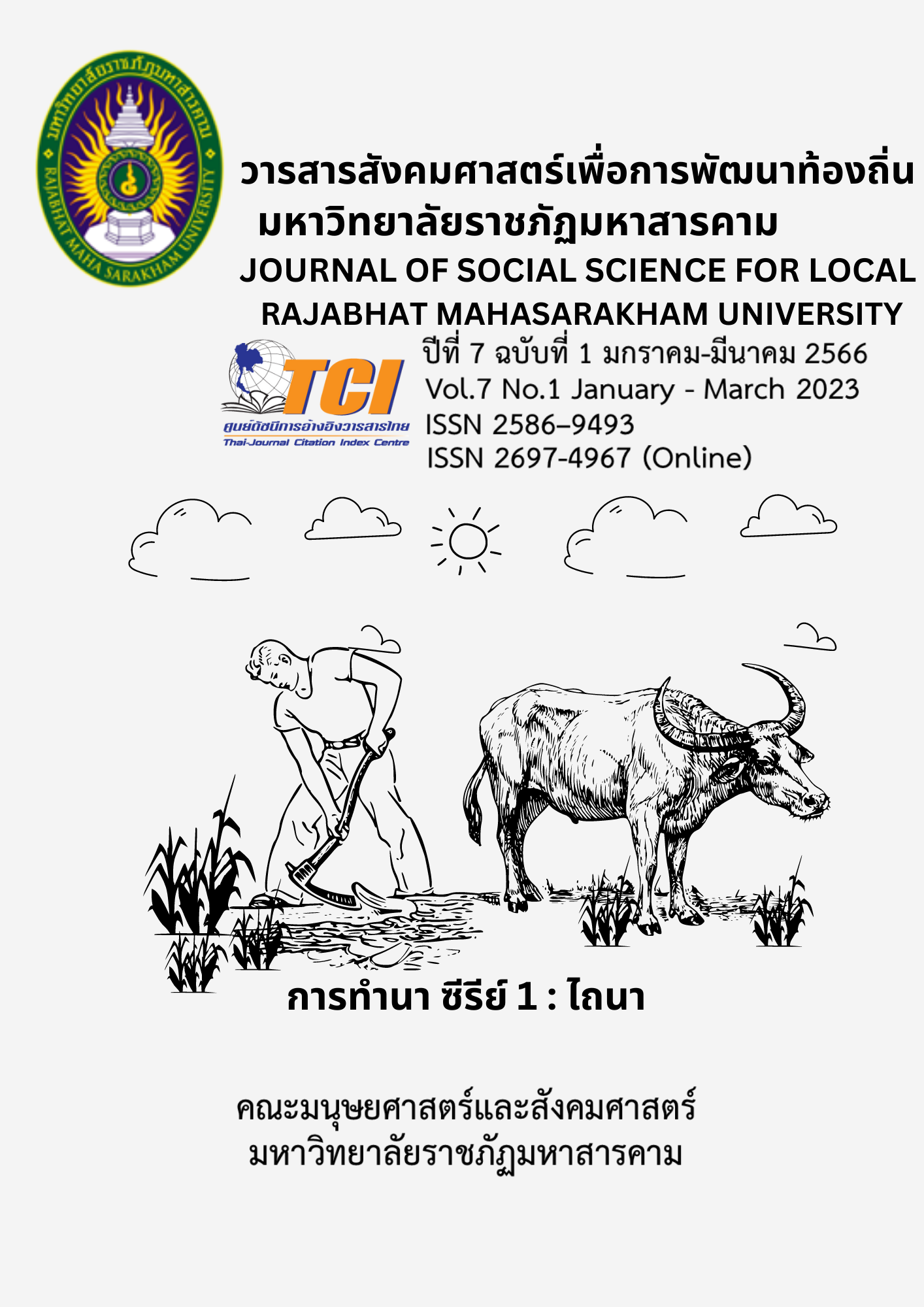การฟื้นฟูป่าชายเลนด้วยการปลูกต้นโกงกางในพื้นที่นากุ้งร้างและนาเกลือร้าง: กรณีศึกษาพื้นที่อำเภอเมืองและอำเภอยะหริ่ง จังหวัดปัตตานี
คำสำคัญ:
การฟื้นฟูป่าชายเลน, นากุ้งร้าง, นาเกลือร้างบทคัดย่อ
งานวิจัยนี้ มีวัตถุประสงค์ 1. เพื่อค้นหาปัจจัยขับเคลื่อนที่ส่งเสริมการปลูกไม้โกงกางในพื้นที่นากุ้งร้างและนาเกลือร้าง และ 2. เพื่อค้นหาปัจจัยอุปสรรคที่ส่งเสริมการปลูกไม้โกงกางในพื้นที่นากุ้งร้างและนาเกลือร้าง เป็นการวิจัยแบบผสมผสานระหว่างการวิจัยเชิงปริมาณและคุณภาพ มีเครื่องมือในการวิจัย คือ แบบสอบถาม และแบบสัมภาษณ์ โดยมีกลุ่มเป้าหมาย เป็นเจ้าหน้าที่สถานีพัฒนาทรัพยากรป่าชายเลนที่ 39 ผู้นำชุมชน กลุ่มอนุรักษ์ในพื้นที่ เจ้าของนากุ้งร้างและนาเกลือร้าง ที่คัดเลือกแบบเฉพาะเจาะจง จำนวนทั้งสิ้น 38 คน แล้วนำข้อมูลที่รวบรวมได้จากแบบสอบถามมาวิเคราะห์โดยใช้สถิติเชิงพรรณนา และข้อมูลที่รวบรวมได้จากแบบสัมภาษณ์ มาวิเคราะห์แบบเชิงเนื้อหา ผลการวิจัยพบว่า 1) ปัจจัยขับเคลื่อนที่ส่งเสริมการปลูกไม้โกงกางในพื้นที่นากุ้งร้างและนาเกลือร้าง ได้แก่ เจ้าหน้าที่มีความรู้และสามารถให้ความรู้เกี่ยวกับการปลูกป่าโกงกางได้เป็นอย่างดีอยู่ในระดับมาก (x̅ = 4.10) รองลงมาเป็นการประชาสัมพันธ์ถึงประโยชน์ที่เจ้าของพื้นที่จะได้รับจากการปลูกไม้โกงกางอยู่ในระดับมาก (x̅ = 3.97) และ 2) ปัจจัยอุปสรรคที่ส่งผลต่อการส่งเสริมการปลูกไม้โกงกางในพื้นที่เอกชน ได้แก่ ความไม่มั่นใจต่อกฎหมายของรัฐบาล (ว่าอนุญาตให้ขายไม้โกงกางได้) อยู่ในระดับมาก (x̅ = 4.47) รองลงมาความต้องการในขายที่ดินมากกว่านำไปปลูกไม้โกงกางอยู่ในระดับมาก (x̅ = 4.27) นอกจากนั้นจากการสัมภาษณ์ผู้ให้ข้อมูลสำคัญจะพบว่าสาเหตุที่ไม่ต้องการปลูกไม้โกงกางในพื้นที่ของตนเองเพราะว่ามีความต้องการขายที่ดินมากกว่าการปลูกไม้โกงกางและกลัวว่าหากมีการปลูกไม้โกงกางพื้นที่ของตนเองแล้วหน่วยงานภาครัฐจะยึดพื้นที่ให้กลายเป็นพื้นที่สาธารณะ



